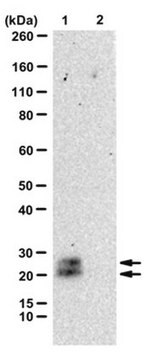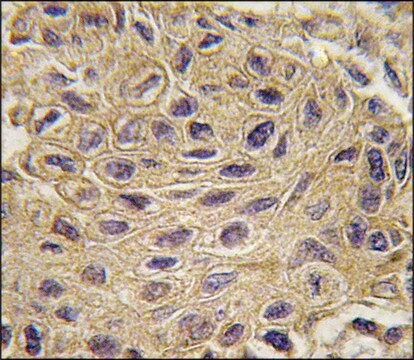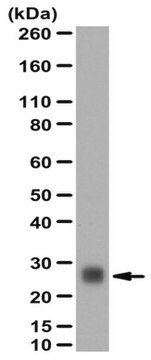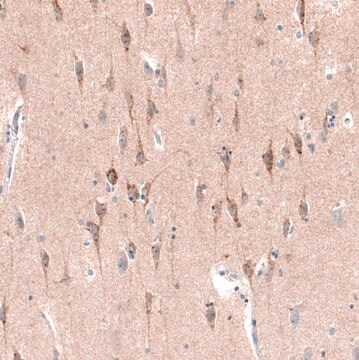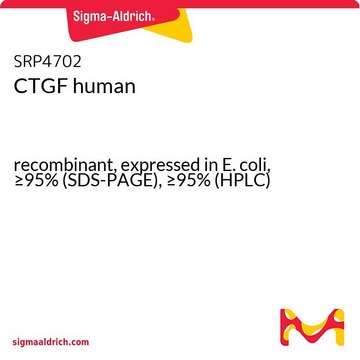ABS1628
Anti-CTGF Antibody, C-Term
from goat, purified by affinity chromatography
Sinónimos:
Connective tissue growth factor, CCN family member 2, Hypertrophic chondrocyte-specific protein 24, IBP-8, IGF-binding protein 8, IGFBP-8, Insulin-like growth factor-binding protein 8
About This Item
Productos recomendados
origen biológico
goat
Nivel de calidad
forma del anticuerpo
affinity isolated antibody
tipo de anticuerpo
primary antibodies
clon
polyclonal
purificado por
affinity chromatography
reactividad de especies
human
técnicas
neutralization: suitable
western blot: suitable
Nº de acceso NCBI
Nº de acceso UniProt
Condiciones de envío
dry ice
modificación del objetivo postraduccional
unmodified
Información sobre el gen
human ... CTGF(1490)
Descripción general
Especificidad
Aplicación
Neutralizing Analysis: A representative lot inhibited CTGF-stimulated DNA synthesis, but not CTGF-stimulated collagen synthesis, in rat kidney (NRK) fibroblasts (Grotendorst, G.R., and Duncan, M.R. (2005). FASEB J. 19(7):729-738).
Note: It is recommended that gel electrophoresis be performed under non-reducing condition to effectively separate CTGF N- and C-terminal fragments, as well as differentially glycosylated N-terminal fragments.
Calidad
Western Blotting Analysis: 1.0 µg/mL of this antibody detected 1 ng of the C-terminal (181-349), but not N-terminal (1-180), fragment derived from baculovirus expressed human CTGF by chymotrypsin cleavage.
Descripción de destino
Forma física
Otras notas
¿No encuentra el producto adecuado?
Pruebe nuestro Herramienta de selección de productos.
Opcional
Código de clase de almacenamiento
12 - Non Combustible Liquids
Clase de riesgo para el agua (WGK)
WGK 1
Certificados de análisis (COA)
Busque Certificados de análisis (COA) introduciendo el número de lote del producto. Los números de lote se encuentran en la etiqueta del producto después de las palabras «Lot» o «Batch»
¿Ya tiene este producto?
Encuentre la documentación para los productos que ha comprado recientemente en la Biblioteca de documentos.
Nuestro equipo de científicos tiene experiencia en todas las áreas de investigación: Ciencias de la vida, Ciencia de los materiales, Síntesis química, Cromatografía, Analítica y muchas otras.
Póngase en contacto con el Servicio técnico